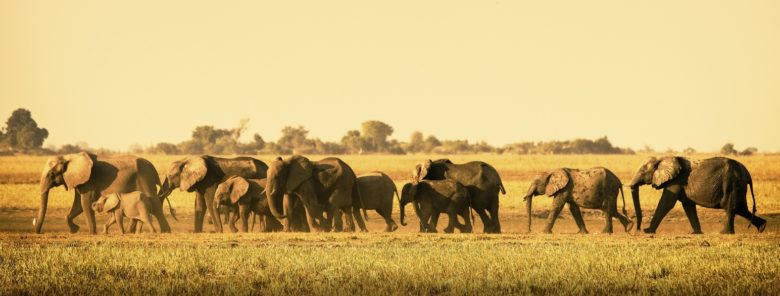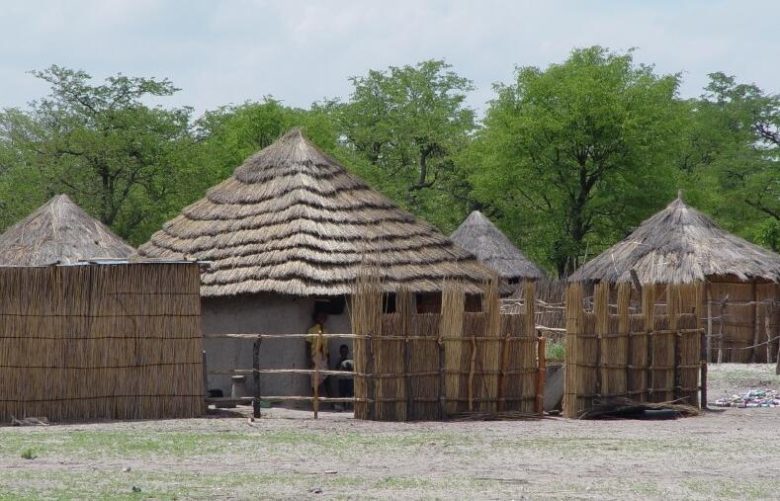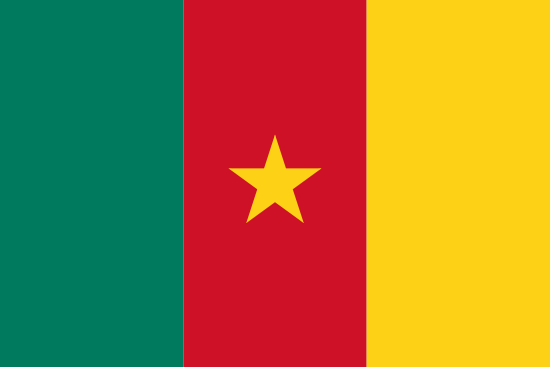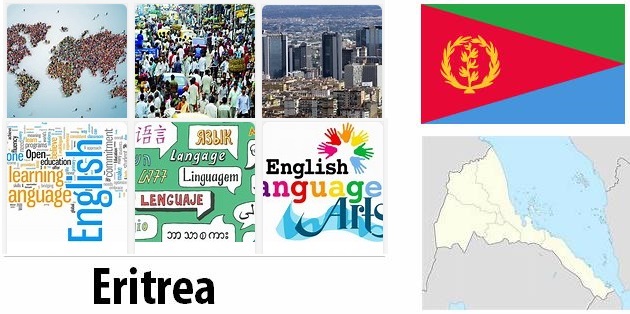Botswana
Botswana is a republic in southern Africa, bordering South Africa in the south, Namibia in the west and north, and Zimbabwe in the east. Botswana also has a short boundary of about 150 meters towards Zambia in the north.
Botswana is one of the most stable countries in the region, both economically and politically. The country has a small and relatively homogeneous population. Botswana is considered a middle-income country, and the economy is largely based on diamond mining.
The country has a well-functioning democracy, with free elections, approved by international observers. Since independence, politics has been dominated by the Botswana Democratic Party. Compared to other countries in the region, Botswana has very little corruption.
Several larger and smaller bantust states have existed in the area which today is Botswana. To stop the proliferation of farmers north from South Africa, the British protectorate of Bechuanaland was established in 1885. On September 30, 1966, Botswana became independent.
The name comes from the largest population group in the country, which is batswana (or tswana). The national anthem is ” Fatshe leno la rona ” (“Bless this noble land”), with lyrics and music by Kgalemang Tumediso Oppsete.
Geography and environment
Botswana is located in southern Africa. The land is flat and consists mainly of highland. The lowest point is where the Limpopo and Shashe rivers meet, and is 513 meters above sea level. The Monalanong Mountain is often referred to as Botswana’s highest peak, but the official altitude of 1494 meters above sea level is debated. The Otse Mountain at 1491 meters above sea level and the Tsodilo Peaks (1489 meters above sea level) are sometimes referred to as the highest points in the country. Capricorn’s turning circle passes through Botswana. The country has no coast.
The dominant geographical element is the Kalahari Desert, which covers 70 percent of Botswana, and extends over the central and southwest parts of the country, as well as parts of Namibia and South Africa. Temperatures range from around 14 ° C in winter (May to August) to an average of around 26 ° C in summer. On hot days the temperature can reach well above 40 ° C.
Botswana has a relatively long drought, lasting from April to October in the south of the country and to November in the north of the country. Nevertheless, it is the northern part that receives the most rainfall. Based on the amount of rainfall, Botswana is semi-dry, but because the country is so high, the climate is subtropical.
The Okavango Delta is one of the world’s largest inland deltas, and has been named one of Africa’s seven natural wonders. Each year, eleven cubic miles of Okavango River water flows into the delta, covering an area of 15,000 square kilometers. None of the water flows into the sea, but is absorbed by plants, evaporates or seeps down as groundwater. The water supply makes the Okavango Delta a very rich animal and plant life, despite being in an area with little rainfall.
Even in the Kalahari Desert, enough panthers are growing to sustain a diverse wildlife. Botswana has 2500 different plant species. 164 mammals, 593 bird species and a variety of reptiles and insects. The national bird is cow-grazing.
Botswana is threatened by drought and desertification. The desert spread is largely due to the high density of grazing cows, but the effect is amplified by global climate change.
People and society
Botswana has a population of just over two million people. 79 percent of the population belongs to the setswana people group. Other peoples are Kalanga (eleven percent) and Basarwa (three percent). ! King (pronounced with a clicking sound at first) is a subset of the san people, who have lived in southern Africa since before the bantu came. They make up less than one percent of the population of Botswana.
English is the only official language, although only 2.1 percent of the population has English as their mother tongue. Setswana, spoken by 78.2 percent of Bots, is often referred to as a national language. Other languages are Kalanga (7.9 percent) and Sekgalagadi (2.8 percent), as well as a number of less prevalent languages.
61.7 percent of the population lives in cities. The largest cities are the capital Gaborone (202,000 inhabitants), Francistown (100,000) and Molepole (70,000). Despite its size, Molepole and several other major urban centers have the status of villages.
The average age is 22.9 years for men and 22.8 years for women. Life expectancy is 56 years for men and 52 years for women.
71.6 percent of the population is Christian. Six percent belong to the traditional, local religion of Badimo, but a large portion of the population practices parts of Badimo, even though they belong to other religions. 20 percent of the population does not belong to any religion, according to a 2001 census.
The political situation in neighboring Zimbabwe has caused a flood of refugees to cross the border to Botswana. These constitute a relatively large minority. There are no exact figures, but the UN High Commissioner for Refugees estimated that there were between 40,000 and 100,000 undocumented Zimbabwean refugees in Botswana in 2009.
Botswana is one of the countries in the world with the highest prevalence of HIV / AIDS. 23 percent of the adult population has AIDS or is infected with HIV.
State and politics
Botswana is a republic where the president is both head of state and head of government. Parliamentary elections are held at least every five years, and Parliament (The National Assembly) elects the president. Parliament has 57 elected and four elected representatives. The elected representatives come from 57 constituencies, while the four appointed representatives are elected by traditional leaders.
In addition, the Botswana institution has Ntlo ya Dikgosi (House of Chiefs), an advisory body consisting of 35 representatives from Botswana’s various ethnic groups. Laws that include tribal organization, property rights and traditional law must be discussed in Ntlo ya Dikgosi before being sent to parliament.
Botswana has a two-part legal system, one of which is based on British common law and the other on traditional, local legal traditions. The Court of Appeal and the Supreme Court are the two supreme courts, while the magistrate courts and traditional courts are subordinate courts.
Botswana is a multi-party democracy, but the Botswana Democratic Party (BDP) dominates the policy and has been in power continuously since the country became independent. At the 2009 election, BDP received 53 percent of the vote. The two largest opposition parties received 22 percent (Botswana National Front) and 19 percent (Botswana Congress Party).
BDP was founded by Seretse Khama in 1961, and was an important party in the struggle for independence. In 1966, Khama became the first president of an independent Botswana. He was re-elected twice and died in service in 1980. His son Ian Khama came to power in 2008.
Botswana is a member of the UN and most of the UN’s special organizations, including the World Bank and the World Trade Organization ; Commonwealth, African Unity Organization, SADC and Cotonou Agreement.
History
People have lived in Botswana for tens of thousands of years. Traces of the world’s oldest known ritual have been found in the Tsodilo Mountains, northwest of Botswana. In a cave in the mountains a six-meter-long python snake has been found carved into stones and implements that are 70,000 years old. Since none of the tools found in the cave appear to be everyday objects of use, and there is no indication that anyone has lived in the cave, archaeologists assume it was used for rituals.
Today, the python snake is still an important part of the mythology of the san people living in the area. The San people, together with the Khoikhoi, are the world’s oldest peoples. According to their origin myth, humans originate from a python, and the dry riverbeds around the Tsodilo Peaks must have been created by the python as it circled around the mountains in search of water.
In the period 200-500 AD, the first bantu people came to the area, as part of the great bantu expansion. The Bantu lived in small clan communities, loosely subordinated to a more extensive tribal chief. Some of these communities evolved into larger states, which had trade links as far as the east coast of Africa.
Towards the end of the 19th century, the British missionary John Mackenzie began to worry that the local tribes in the area were being threatened by settlers coming north from South Africa. After much lobbying from Mackenzie, the British protectorate of Bechuanaland was established in 1885.
As protectorate, Bechuanaland was originally self-governing, but this ended when the British left the area under the administration of the British High Commissioner to South Africa in 1891. The southern part of Bechuanaland became part of the Cape Colony in 1895, and is now part of South Africa.
In 1895, Cecil Rhodes and his British South Africa Company attempted to claim Bechuanaland. The three Tswana kings Khama 3, Batho and Sebele 1 went to London for help and managed to persuade the British government to stop Rhodes.
As in the other colonies in Africa, the struggle for secession from the colonial power began in earnest after World War II. In Botswana, the struggle for independence was led by Seretse Khama, king of the bamangwato people, one of the eight main tribes among the tswana. Khama was educated in South Africa and England, and in 1948 he married British Ruth Williams, which created furore both in South Africa and among the leaders of the bamangwats. After taking Ruth with him on a trip to Bechuanaland, he managed to win the people over to his side. But in South Africa, marriage across the races was forbidden, and they pushed Britain to send Khama into exile in 1951.
In 1956, the couple were allowed to travel back to Bechuanaland after Khama resigned. In 1961, he started the Bechuanaland Democratic Party, which was successful in the 1965. Election, Khama became prime minister of the protectorate, and worked hard for the country to become independent. In 1966, Botswana became an independent state, with Seretse Khama as president.
Economy and business
Since independence, Botswana has experienced tremendous economic growth. Between 1966 and 1999, the country had an average annual economic growth of nine percent. At the beginning of the 2000s, the economy began to fail. The global financial crisis hit Botswana hard, causing the country to have negative economic growth in 2009, but growth has picked up again in recent years. Botswana is considered a middle-income country.
Botswana’s gross domestic product (GDP) was $ 15.5 billion in 2013. Adjusted for purchasing power parity, it was $ 34 billion. Botswana is the least corrupt country in Africa. The country is ranked 30th out of 175 countries on the Transparancy International Corruption Perceptions Index in 2013, ahead of countries such as Spain, Portugal and Israel.
The economy is mainly based on mining. Botswana is the country in the world with the highest production of jewelery quality diamonds (measured in value). Diamond production accounts for more than one-third of the country’s GDP, 70-80 percent of export revenue and around one-third of the state’s revenue. Botswana also mines copper, gold, nickel and sodium carbonate (soda).
Tourism is also an important industry. Wildlife is the main reason tourists visit Botswana. Photo and hunting safaris are popular. It is especially the Okavango Delta, with its very rich and concentrated wildlife, which attracts tourists, and Botswana has focused specifically on luxury safaris. In the Kalahari Desert lies the Central Kalahari Game Reserve, the world’s second largest game reserve.
Although mining is the most important economic driver, agriculture is the largest employer. Yet agriculture accounts for only 1.9 per cent of GDP. Exports of cattle are the main source of income from agriculture, while sorghum, corn and millet are the most common plants to grow.
Knowledge and culture
All children in Botswana are entitled to a 10-year primary school. The first seven years are free. According to the government’s website, over 95 per cent of children aged 7-13 were enrolled in school in the period 1995-2000, with a hundred per cent participation in 1999 and 2000. Around half of the pupils continue with two years of upper secondary school.
Botswana has two public universities, the University of Botswana in Gabarone and the Botswana University of Science and Technology in Palapye, in addition to several colleges. There are also several private educational institutions. 85 percent of the population over the age of 15 can read and write.
Media in Botswana is dominated by the state Botswana Press Agency (BOPA). BOPA operates television and radio channels that broadcast programs in English and setswana, in addition to the country’s only daily newspaper, Dikgang Tsa Gomieno (Today’s News). In addition, there are several private radio stations, a private television channel and a number of weekly newspapers. The major political parties also have their own publications.
The oldest art in Botswana is cave paintings. The oldest is believed to be between 20,000 and 30,000 years old. Today’s traditional arts and crafts can be divided into two traditions, the San people’s and the Bantu’s, but the two people groups have also influenced each other’s cultural expression.
The kung people are known for jewelry made of ostrich eggs and decorations on utility items such as pottery and hunting weapons. The Batswana is especially known for its rugs of interwoven fur patches. Botswana is also known for baskets woven from palm leaves. The baskets are woven in intricate patterns and it can take up to two weeks to produce one basket.
Traditional tswana music is vocal based. Unlike much of the music elsewhere in southern Africa, it is not accompanied by drums. Instead, the Tswana uses a variety of different stringed instruments. The lyrics are usually about family, love and traditions.
Gumba-gumba is a pop music style that blends local, South African and western music. Hip-hop is also popular. The rap genre motswako, which is popular in Botswana and South Africa, was first developed by Mr T (Tebogo Mapine) in the 1990s.
A much-talked about subculture is Botswana’s heavy metal scene. With its distinct style, metal trailers dress in black leather from head to toe, nail belts and cowboy hats. The Heavy Rock became popular in the country in the early 1970s, and is seen by fans as part of the national culture. Skinflint is the best known band. Wrust and Overthrust are other local heroes.
The most well-known Botswana novelist is the lawyer Unity Dow, who has also identified himself as a human rights activist. She has published five books, which often deal with social issues, such as women’s oppression and the relationship between modern and traditional culture.
Scottish writer Alexander McCall Smith, who was born in Southern Rhodesia (now Zimbabwe ) and has lived in Botswana for several years, writes the popular crime novel series Damenes Detective Agency # 1, with the action added to Botswana.




